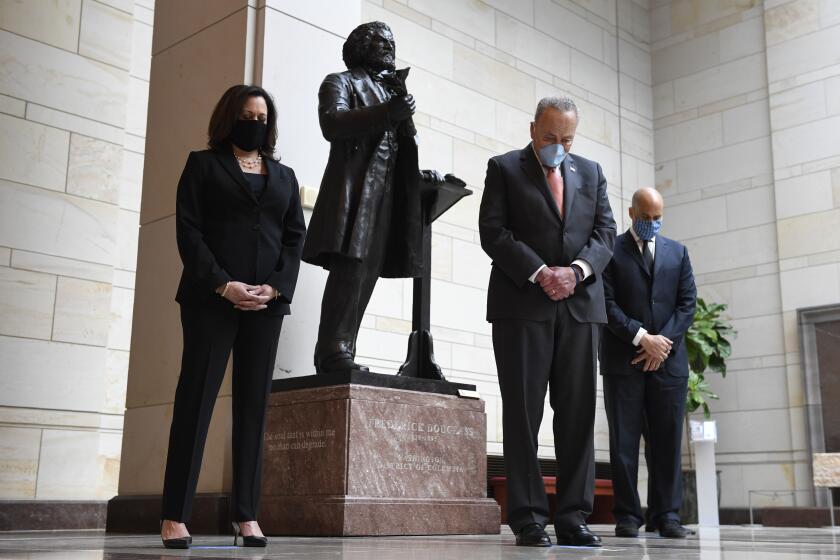How the poll was conducted
This USC Dornsife/Los Angeles Times post-election poll was conducted June 9-10, 2016 among 1,553 registered voters in California, including 1,264 who said they voted in the June 7 primary election.
Respondents for this non-probability survey were selected using an algorithm from among the 3 million people who take surveys on the SurveyMonkey platform each day. Data for the survey have been weighted for gender, age, race, education, and region using the Census Bureau and Bureau of Labor Statistics’ Current Population Survey to reflect the demographic compositions of California. For voters, data were also weighted to the results of the U.S. Senate and presidential primaries.
The bootstrapped Confidence Intervals, or error estimates, for this survey are plus or minus 3 percentage points for California registered voters, and plus or minus 4 percentage points for voters in the election.
Weights and reporting for California regions were based on the following groups of California’s 58 counties:
- Central Valley: Butte County, Colusa County, El Dorado County, Fresno County, Glenn County, Kern County, Kings County, Madera County, Merced County, Placer County, Sacramento County, San Joaquin County, Shasta County, Stanislaus County, Sutter County, Tehama County, Tulare County, Yolo County, Yuba County
- San Francisco Bay Area: Alameda County, Contra Costa County, Marin County, Napa County, San Francisco County, San Mateo County, Santa Clara County, Solano County, Sonoma County
- Los Angeles County
- Orange County / San Diego County
- Inland Empire: San Bernardino County, Riverside County
- Other: All other California counties
Because the sample is based on those who initially self-selected for participation rather than a probability sample, no estimates of sampling error can be calculated. All surveys may be subject to multiple sources of error, including, but not limited to sampling error, coverage error and measurement error. Polls conducted in one day may include additional error due to the limited time period that panelists have to respond to and complete the survey.
To assess the variability in the estimates and account for design effects, we create a bootstrap confidence interval to produce an error estimate, meaning we use the weighted data to generate 1,000 independent samples and calculate the 95% confidence intervals for the weighted average.
When analyzing the survey results and their accuracy, this error estimate should be taken into consideration in much the same way that analysis of probability polls takes into account the margin of sampling error. For example, if 47% of voters say they support Candidate A and 43% of voters support Candidate B, and the error estimate is plus or minus 3.5 percentage points, Candidate A could be supported by as few as 44% of voters and Candidate B could have as many as 47%. Therefore, Candidate A does not have a “lead.”
David.Lauter@latimes.com
For more on Politics and Policy, follow me @DavidLauter
More to Read
Get the L.A. Times Politics newsletter
Deeply reported insights into legislation, politics and policy from Sacramento, Washington and beyond. In your inbox three times per week.
You may occasionally receive promotional content from the Los Angeles Times.










